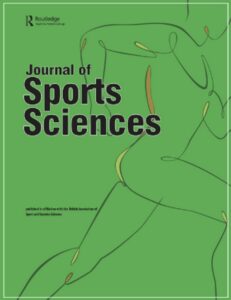Publications

Minimum effective plyometric training volume in sedentary individuals: Impact on lower limb viscoelastic properties and functional performance in a randomised controlled trial
Authors: Maximiliano Torres-Banduc 1, 2, 3, Luis Chirosa-Rios 1, Ignacio Chirosa-Rios, Daniel Jerez-Mayorga 1, 4
Affiliations:
- Department Physical Education and Sports, Faculty of Sport Sciences, University of Granada, Granada, Spain
- Escuela de Kinesiologia, Facultad de Ciencias de la Salud, Universidad de Las Americas, Vina Del Mar, Chile
- Escuela de Ciencias de la Salud, Universidad de Vina del Mar, Vina del Mar, Chile
- Exercise and Rehabilitation Sciences Institute, Faculty of Rehabilitation Sciences, Universidad Andres Bello, Santiago, Chile
Journal: Journal of Sports Sciences - October 2024, Volume 42, Issue 19, Pages 1794-1805 (DOI: 10.1080/02640414.2024.2413327)
-
Field & Applications:
- Sport
- Muscle development / Performance
- Musculoskeletal health
- Occupational Healthcare
Sedentary lifestyles reduce muscle mass, strength, power, and alter viscoelastic properties. Plyometric jump training (PJT) shows promise in countering these effects, but the optimal training volume for individuals with low athletic performance remains unclear.
This study aimed to determine the minimal PJT volume required to improve muscle and tendon viscoelastic properties, strength, and power in sedentary individuals.
A double-blind randomised controlled trial included 44 participants divided into three groups: Control Group (CG) (n = 16), Reduced Volume Training Group (RVTG) (n = 16), and Training Group (TG) (n = 12). The four-week PJT programme involved three weekly sessions with gradual volume increments; RVTG performed 50% less volume than TG. Baseline and follow-up assessments included the isokinetic standing up (SU) and sitting down (SD) phases at 15 cm/s and 5 cm/s, and myotonometer measurements.
In the SU phase at 15 cm/s, significant differences were found (p = 0.01) with higher values in TG (10.0 ± 3.3 N/kg) compared to CG and RVTG. At 5 cm/s, differences in SD were observed (p = 0.002). For Achilles tendon properties in RVTG: stiffness (p = 0.04), decrement (p = 0.01), and relaxation (p = 0.02).
A PJT volume of 2,414 jumps improved muscle strength, while 1,207 jumps altered tendon properties.
Keywords: human physical conditioning, muscle strength dynamometer, sedentary behaviour, resistance training
This investigation offers empirical support indicating that plyometric training volume comprising 2414 jumps elicits significant enhancements in muscle strength and power during functional tasks among sedentary individuals. Furthermore, a volume of 1207 jumps demonstrated the capacity to induce alterations in ankle tendon viscoelastic properties. These observations are significant for developing customised exercise interventions aimed at enhancing functional performance and mitigating the musculoskeletal health risks associated with sedentary lifestyles.


